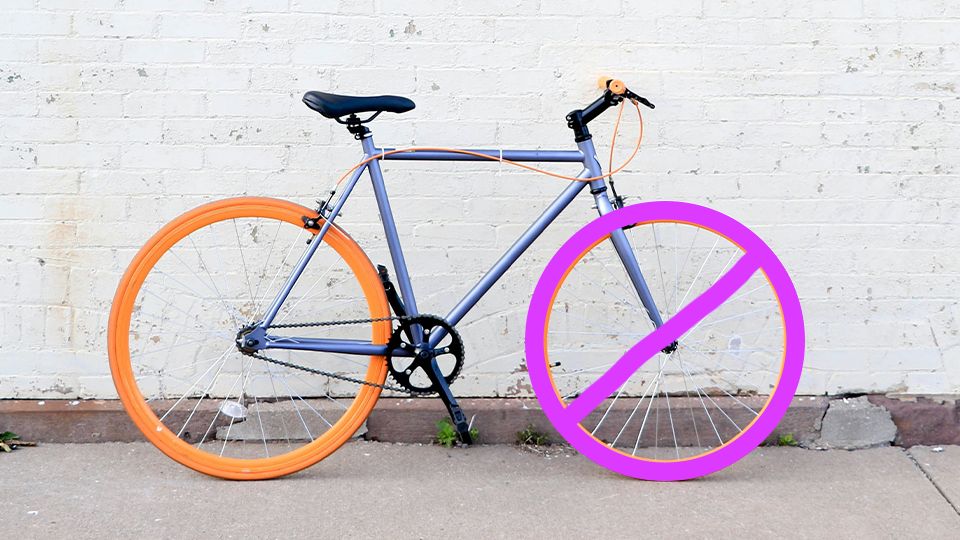As we finally take our bicycles out for summertime, it also marks open-season for bike thieves. And although a determined thief will be hard to stop, together with experts at Fans store we've gathered some tips on how to protect your bicycle from unnecessary attention by choosing the right bike lock and bike rack.
What is a good bike lock?
First things first. What is something we can do to improve the safety of our bike before leaving the house? Agnis Matisāns, an expert at Fans, points out that it's buying a quality lock: "When choosing a lock, you need to consider the strengths and weaknesses of each lock type, so you can find out which is best for you by assessing the situations and conditions in which you plan to use it."
Rope-type locks are the cheapest and the most insecure, as most often they can be cut with palm-size pliers. Such locks are only recommended if the bicycle is to be parked within view, for example when dining on the terrace of a café from which the bike can be seen.
Chain-type locks are slightly more secure, but will also be relatively easy to cut if the thief carries large enough pliers. When using a chain, make sure not to leave your bike unattended for long periods of time.
U-lock will be harder to break, so a bike connected to it will be better protected. At the same time, the U-lock is less easy to transport and has a fixed size, so you will only be able to lock your bike to narrow objects, such as a staircase handrail, a bike rack or a signpost.
Folding locks are among the most secure and convenient to use, and have therefore become the most popular on the market. These types of locks can be folded into a small, easy-to-transport object and attached to the frame of the bicycle. They're unwieldy, relatively light (700-1200 g) and, to break them, the thief will need an angle grinder or flex, which will draw a lot of attention.
Smart locks have the highest level of security – they connect to your smartphone (via Bluetooth or NFC technology) and have an alarm that alerts you if someone tries to break it. Unsurprisingly, they're also the most expensive option.
The expert reminds us that a secure lock is not enough – if a thief is properly prepared and given enough time, almost any lock can be broken. Therefore, you should also choose a secure object to lock the bike to and always(!) lock it to the bike frame.

Where is it safe to leave your bicycle?
"When we look at the bicycles parked on the streets, we see that people often unskillfully lock their bikes or leave them completely unlocked, thinking that they are parked in a safe enough place," says Fans representative Agnis Matisāns.
A typical mistake is connecting the bike to the wheel instead of the frame. In such cases, even a high quality, expensive lock does not help, as the wheel can easily be unscrewed and the rest of it carried away. Unfortunately, many bike racks are low and of poor quality (the so-called plate dryers) to which only the wheel can be connected. You should avoid locking your bike to one of these at all times.
To protect your bike from theft, you need a good quality and secure lock, but that's not enough - you also need to connect it properly and choose a safe place to leave your bike.
"Finally, you should also choose a safe place to park your bike, preferably in a locked room or courtyard, a place with high pedestrian traffic and surveillance cameras to reduce the risk of theft. At the same time, you can't rely on it completely, so for maximum security, you should always lock your bike with a secure lock and have it insured," says Agnis.
And there you have it! While you'll never be 100% safe, there are things you can do to protect your property. Balcia's City Combo insurance not only covers theft of your bike, but also includes accident and third-party insurance for both your and your family members' bikes from only €4 per month. And if by the end of this you're convinced you want to work in insurance and share in our mission of high-quality protection, check out our vacancy page!







